Our favorite type of snow: Snow Princess and Blushing Princess hybrid Alyssum! Which Snow Combo is your favorite? See individual photos at the DBGS Facebook Page.
Author Archives: admin
Self-Watering Wands

Ogden, Utah – A team of inventors at Diamond Bar Gro-Systems in Ogden, Utah, has come up with a way to make any planter self-watering and automatic. This is accomplished with a device that waters plants from the bottom up and only when needed. Container gardening has become extremely popular in recent years as urban populations have grown. It's much easier than traditional gardening and fits smaller areas. The new device, which is available to order now, creates ideal growing conditions in containers and overcomes the single biggest challenge facing these gardeners: watering.
Most planters are watered from the top and require a drain hole at the bottom to prevent over-watering. Self-watering pots, on the other hand, are watered from the bottom, fully containing water in a hollow reservoir beneath the potting mix. Normally, water is added through a vertical tube which runs down into the reservoir from above the pot. A wick tube which extends into the reservoir from the potting mix then soaks the water up into the growing area. Studies show that self-watering pots are as much as 70-80 percent more water-efficient and make better use of fertilizer than traditional planters. They create the optimal growing environment, which accelerates plant growth and results in measurably larger, more vigorous plants.
The Gro-System(TM) team has discovered that any pot can become self-watering as long as it fully contains water. Their new device makes this possible with a small micro-reservoir (to measure the pot's saturation level) and an automatic valve controller. When connected to a water line, the device automatically controls water based on reservoir level. It turns the water on when the reservoir is empty, allowing the pot to fill, and then it turns the water off when the reservoir is full. This operation adapts to plant water needs, unlike most drip systems, which supply water at programmed time intervals. In addition, the device can fit a wide variety of containers, from small pots to large raised bed gardens.
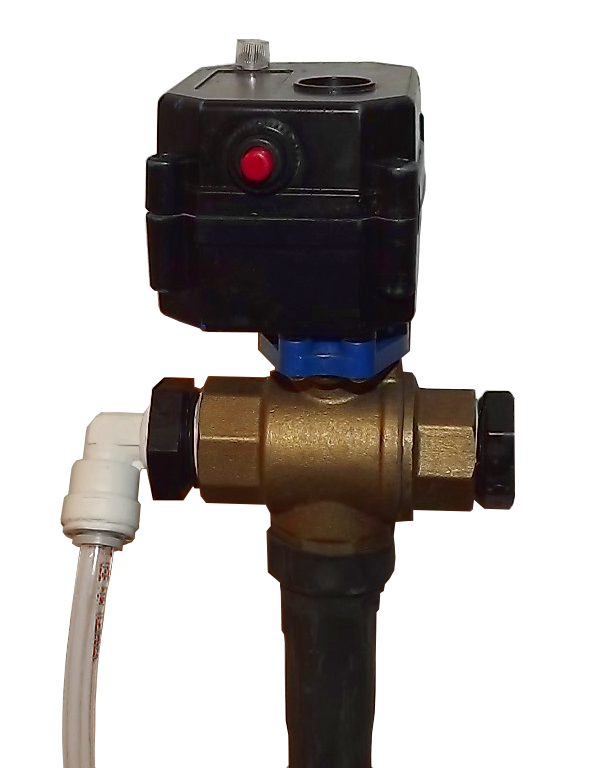
Although the concept is simple, the design process has been challenging. “This is the culmination of over twenty-five years of research and experimentation,” said co-founder Alan Harris. He and his father started the company after developing a complete system for growing plants in self-watering pots called the Gro-System(TM). Since that original design, Alan has steadily worked to automate watering completely. “Consistent watering is key to successful gardening,” he explains. There have been at least a dozen failures along the way, including the use of a swamp cooler valve. Working over the last ten months with a few friends, he has finally found the solution. Now planted pots can be left for weeks at a time without worry – the device does all watering automatically.
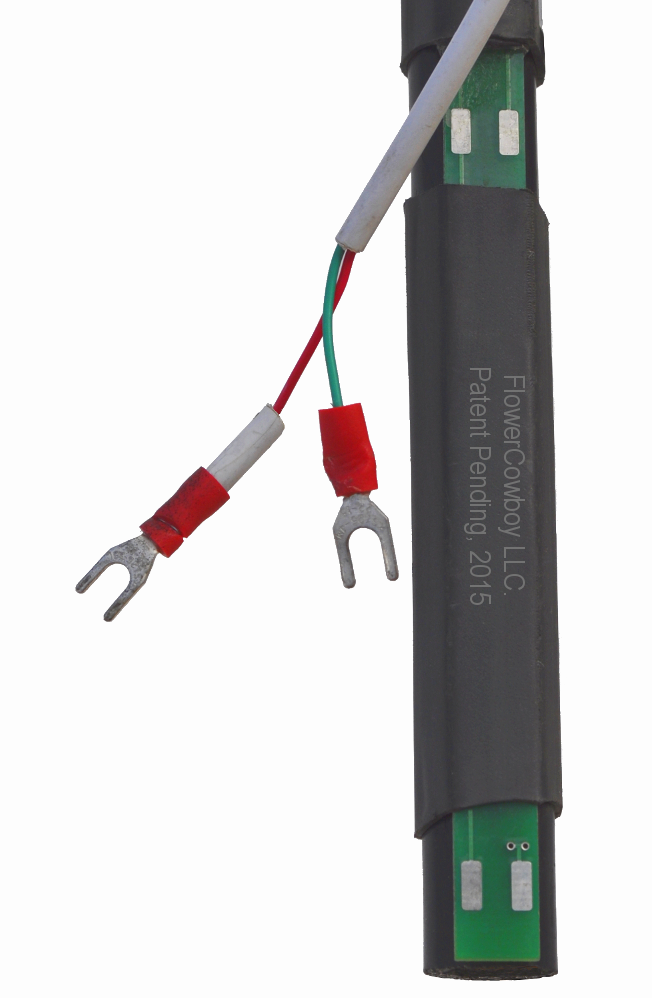
A short trip to their store on Riverdale Road is enough to convince anyone it works. Described as "the most colorful corner in Ogden," their brilliant display gardens feature a kaleidoscope of cascading blooms. The impressive vegetable garden there includes all kinds of tomatoes, potatoes, peppers, and much more. They are now scouting out interested investors to complete the final stages of design and begin production. To learn more, please call Alan at (801) 393-9339.
In Honor of Canning Season: Mega Hanger
Cantaloupe Magic
Can you believe it's possible to grow over 40 melons grown in a 4'x4' raised bed in just one season? It's true. This summer, our cantaloupe box exploded with fruit!
This Gro-System 4'x4' self-watering raised bed has four cantaloupe hills (12 total plants) spaced about 3' apart in a square pattern. An 8' tall cage built of heavy-gauge wire fencing supports the vines. We trained them throughout the summer to grow up the cage instead of spreading out on the ground. This has saved a LOT of space, and because it's a Gro-System, it only requires watering every 3 or 4 days!
Learn more at our at our facebook page!
New Product Treats Yellowing Leaves
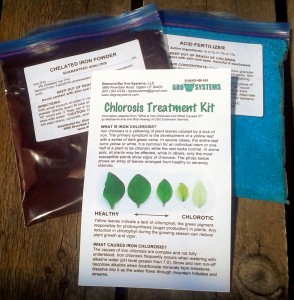
Diamond Bar Gro-Systems has a new product: The Chlorosis Treatment Kit.
WHAT IS CHLOROSIS?
Iron chlorosis is a yellowing of plant leaves caused by a lack of iron. The primary symptom is the development of a yellow leaf with a series of dark green veins. In severe cases, the entire leaf turns yellow or white. It is common for an individual stem or one half of a plant to be chlorotic while the rest looks normal. In some pots, all plants may be affected, while in others, only the most susceptible plants show signs of chlorosis. The photo below shows an array of leaves arranged from healthy to severely chlorotic.
Yellow leaves indicate a lack of chlorophyll, the green pigment responsible for photosynthesis (sugar production) in plants. Any reduction in chlorophyll during the growing season can reduce plant growth and vigor.
WHAT CAUSES IRON CHLOROSIS?
The causes of iron chlorosis are complex and not fully understood. Iron chlorosis frequently occurs when watering with alkaline water (pH level greater than 7.0). Snow and rain run-off becomes alkaline when bicarbonate minerals from limestone dissolve into it as the water flows through mountain hillsides and streams.
Most vegetable plants and plants native to alkaline soils usually don't suffer from iron chlorosis if they are regularly fertilized. Unfortunately, most hybrid trailing plants are non-native and require consistent pH conditions below 6.
Even though there is plenty of iron in the regular Diamond Bar fertilizer, certain conditions can cause chlorosis, making iron unavailable to plant roots, including 1) under-fertilizing and 2) over-watering.
UNDER-FERTILIZING
Under-fertilizing occurs when plants are fertilized irregularly, infrequently, or insufficiently. This is especially common during cooler weather when plants are small and use the water more slowly.
To prevent this, fill the reservoir only partially instead of to overflowing so the potting mix dries out more often, but still use the same amount of fertilizer as if filling the reservoir full. Using the 16'' round pot as an example: put only 1 gallon of water in the reservoir (instead of 2), but still use the full 2 oz. of fertilizer once every 5-10 days, depending on plant size.
OVER-WATERING
Over-watering can result from topping off the reservoir before the potting mix has dried out, neglecting to use the dipstick, adding extra water from automatic sprinklers or roof runoff, and/or an over-abundance of rain. Ideally, the reservoir should dry out at least every 4-5 days.
If plants take longer to use the water, fill the reservoir only half-way instead of to overflowing. It may even be necessary to dump out the reservoir water through the drain-spout by tilting the pot drain-side down during persistent wet period, allowing the potting mix to dry out.
TREATMENT FOR CHLOROSIS
The occasional use of special acid fertilizer and water-soluble chelated iron (a form of iron which plants can absorb) combined with careful watering and fertilizing can green up chlorotic plants in 2-3 weeks.■
Gro-System Give-Away
Link
Bucket Gardens

Raised Bed
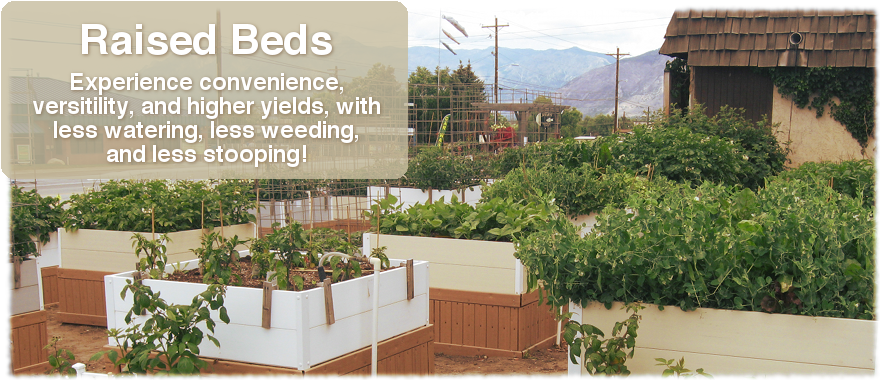
Oval Pots
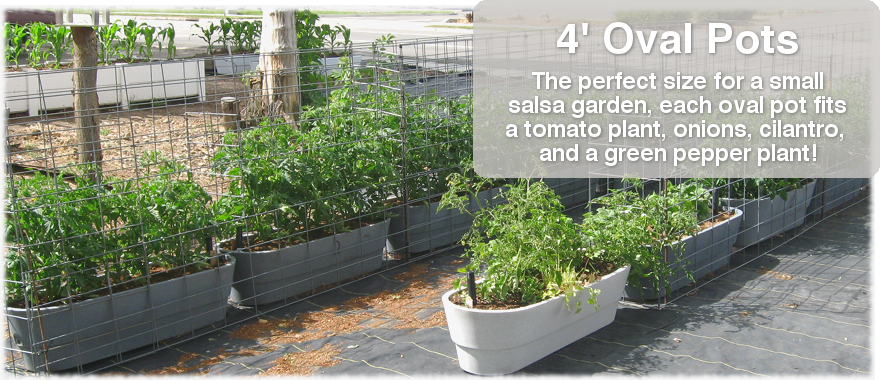

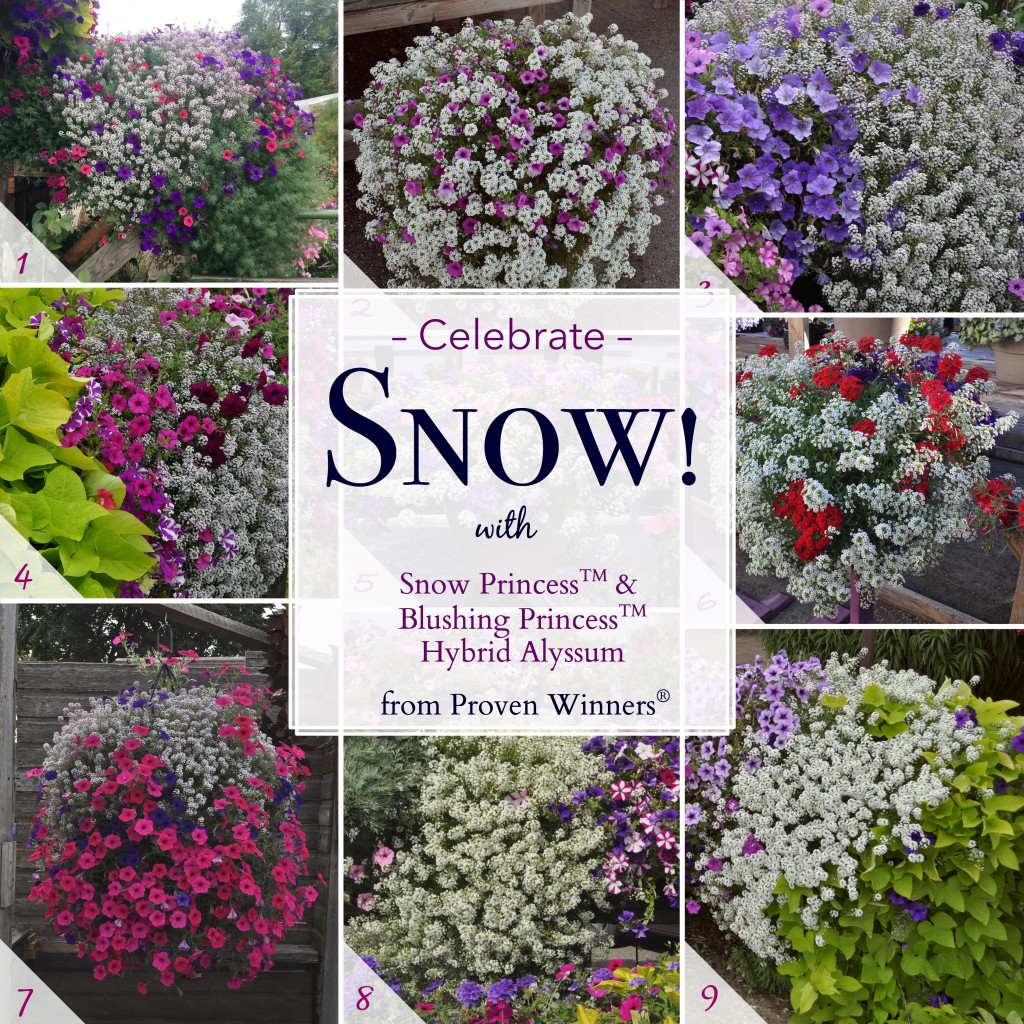
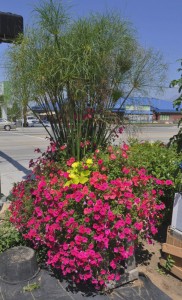
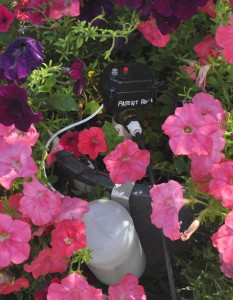
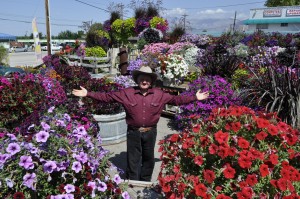

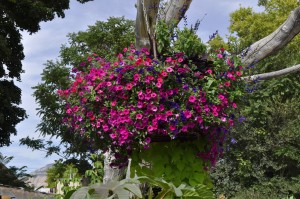
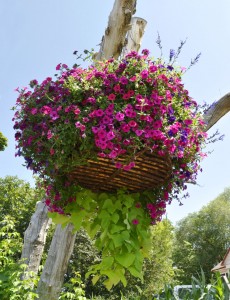

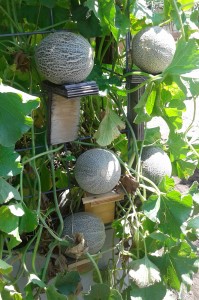
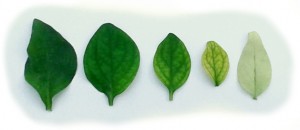
Better Quality ~
Less Maintenance